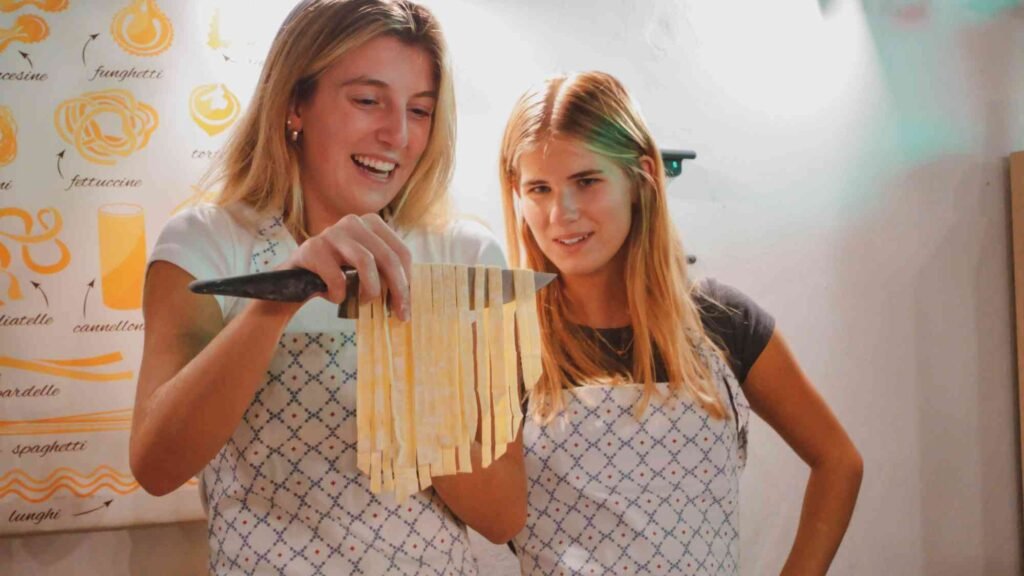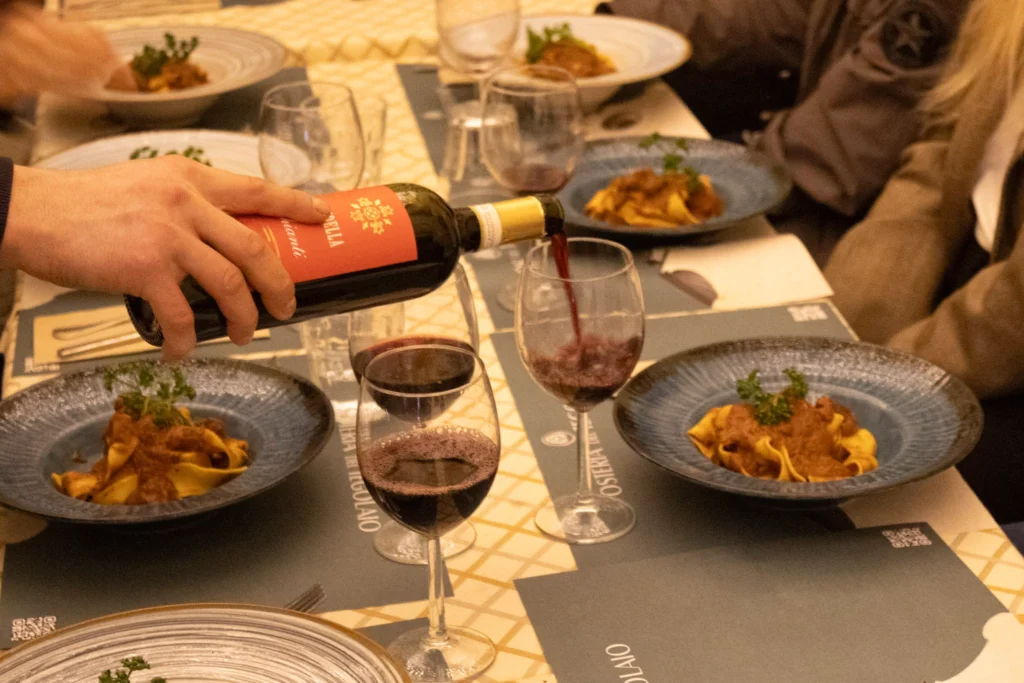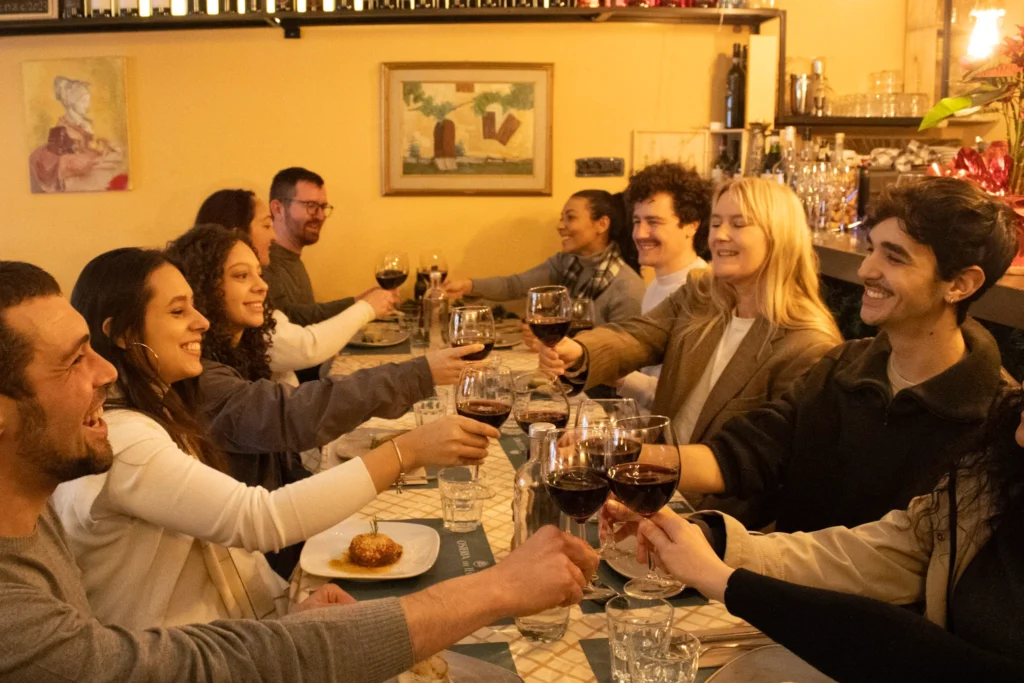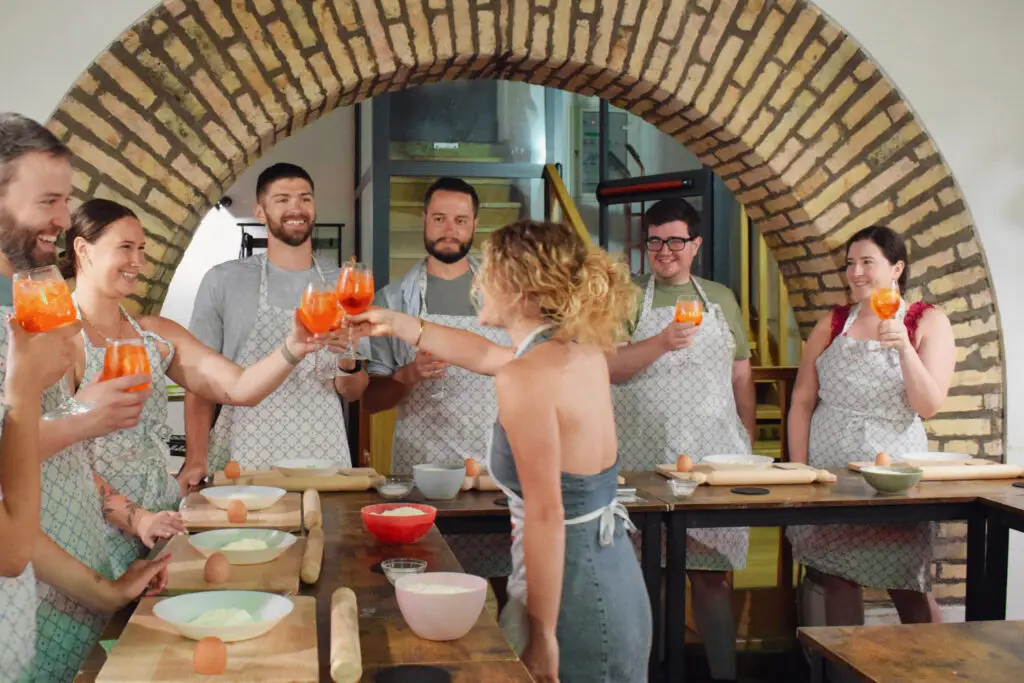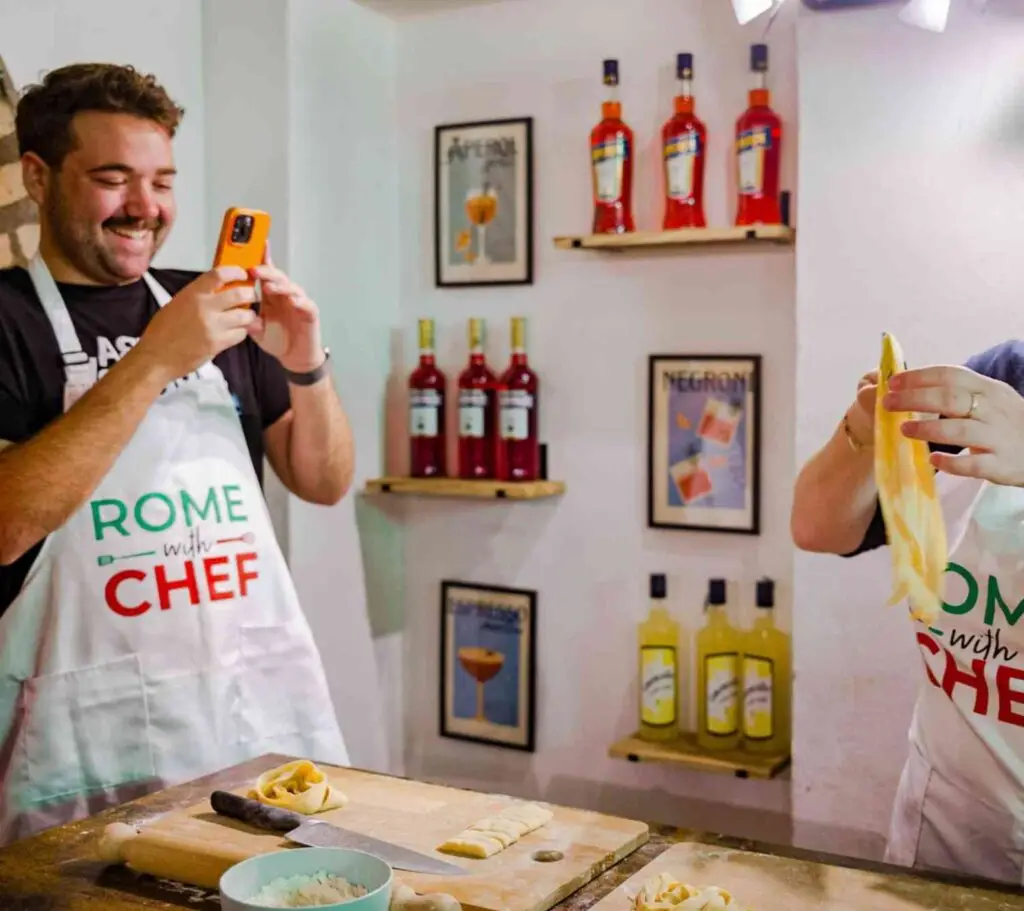Pasta is comparable only to pizza as the most quintessentially Italian food to have become a global hit. Dried durum wheat pasta is a staple in many kitchens worldwide. But how many of us have stopped to wonder: where does pasta come from? While varieties of fresh pasta and noodles have been enjoyed since antiquity, the dried pasta that now lines our supermarket shelves has a fascinating origin story rooted away from the Italian peninsula.
Made in Italy Sicily
As the island that sits between Europe from Africa, Sicily has always been at the crossroads of cultural innovation. By the mid-twelfth century, Sicily was a melting pot of cultures; and nowhere was this more evident than its capital of Palermo. Arabs, Byzantines and Normans (French) mixed and intermingled, some driven here by conquest, others drawn by mercantile trade.
By the standards of the time, King Roger II of Sicily was an exceptional medieval monarch. Though no stranger to war, the Norman king refused to join the Second Crusade to Jerusalem since he believed it would show contempt towards his largely Arab subjects. Roger kept a proudly multicultural court — something which propelled Parlemo to become an intellectual centre for both Western and Arab scholars.
Below is how AI thinks it might have looked, and apart from some of the very freaky faces the overall impression is not actually that bad.
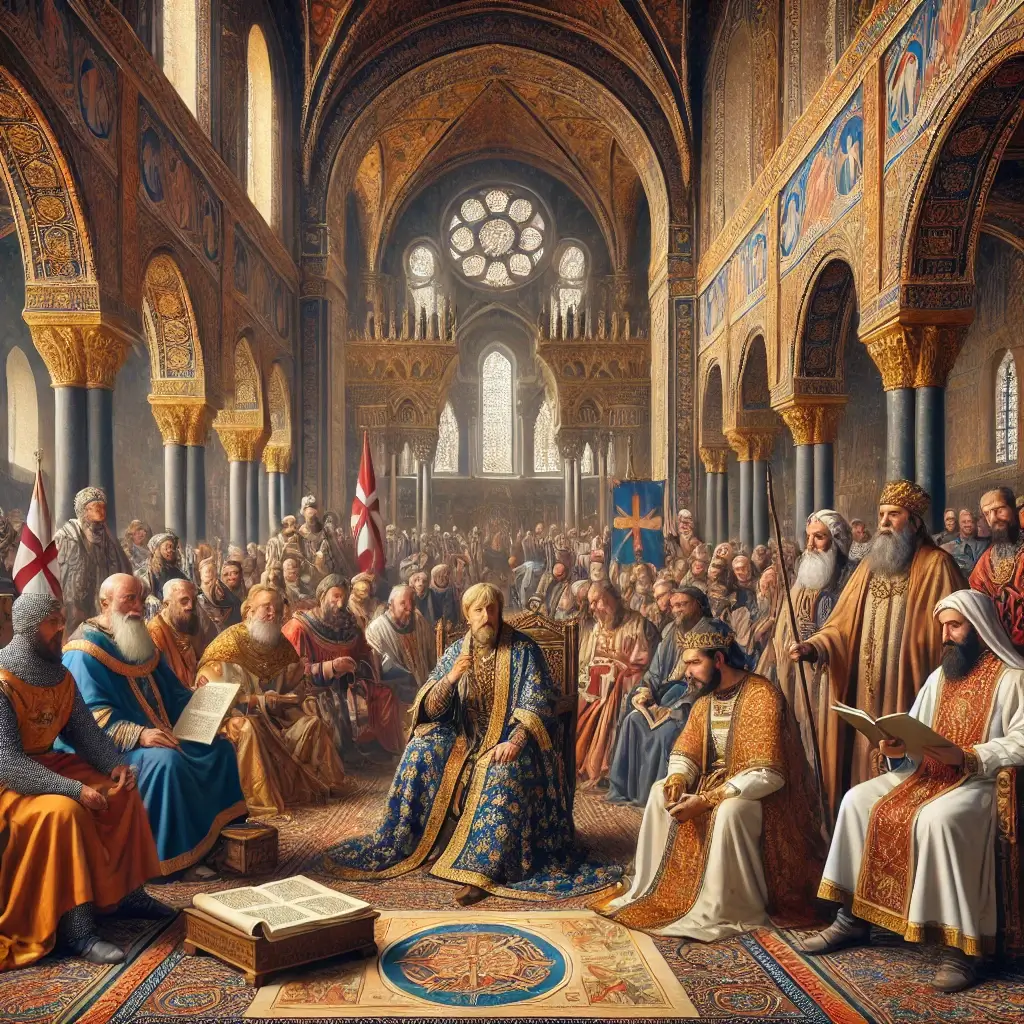
One such Arab scholar was the geographer Muhammad al-Idrisi, whom Roger commissioned to compile a comprehensive atlas of the known world, accompanied by a detailed descriptive text.
Where Does Pasta Come From: Our Earliest Reference
In 1154, al-Idrisi presented his Tabula Rogeriana, and it is within this that we find the earliest record of pasta arriving on Italian shores.
“West of Termini, there is a delightful settlement called Trabia [along the Sicilian coast east of Palermo] whose ever-flowing streams propel a number of mills. Here there are huge buildings in the countryside where they make vast quantities of itriyya. This is widely exported everywhere: shipped to Calabria, to Muslim and Christian countries.”
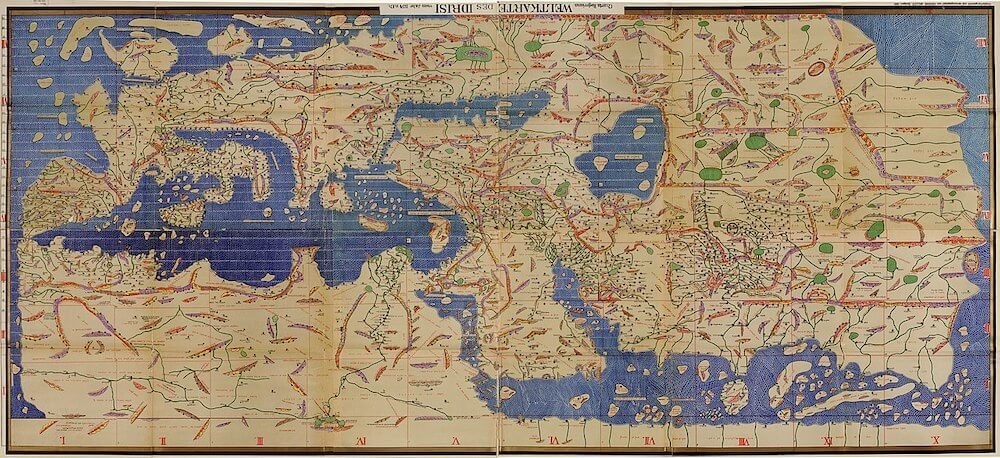
The Meaning of Pasta
Now, the eagle-eyed among you will have spotted that the word pasta appears nowhere in al-Idrisi’s text. What we have instead is the Arabic word itriyya, an ancient form of dried durum wheat pasta, whose nearest cousin was called lagana (thin sheets of dough).
If lagana and thin sheets of dough both sound familiar, that’s because lagana gave rise to the Italian lasagna we know and love today. All nice and easy so far, but what exactly does the word “pasta” mean? And where does “pasta” come from?
The word “pasta” itself is Italian for dough or paste and can describe doughs of many shapes and sizes, from tortellini to macaroni to ravioli. Each variety carries its own history and cultural significance, adding to the rich tapestry of this versatile food.
The Great Myth of Marco Polo as Father of Pasta
You might have heard the legend that Marco Polo brought pasta back to Italy from China? Well, you may be disappointed to learn that this is nothing more than a myth, concocted by an American marketing team in the 1920s to try and sell more pasta.
The story focuses on a Venetian sailor — named none other than Spaghetti — who was part of Marco Polo’s expedition to China at the end of the thirteenth century. In China, Spaghetti met a beautiful girl who was making fine strings of noodles. Enchanted as much by noodles as by her own bountiful beauty, he persuaded her to let him try some of this dish and to let him take some noodles back to his ship and show his captain. And the rest, as it goes, is history.
If this sounds like the stuff of fantasy that’s because, unfortunately, it is. It comes straight from a story called “A Saga of Catai” published in the USA’s Macaroni Journal — yes, that was the actual name of a serious culinary publication — in 1929. But then this begs the question: why would the Americans make something like this up?
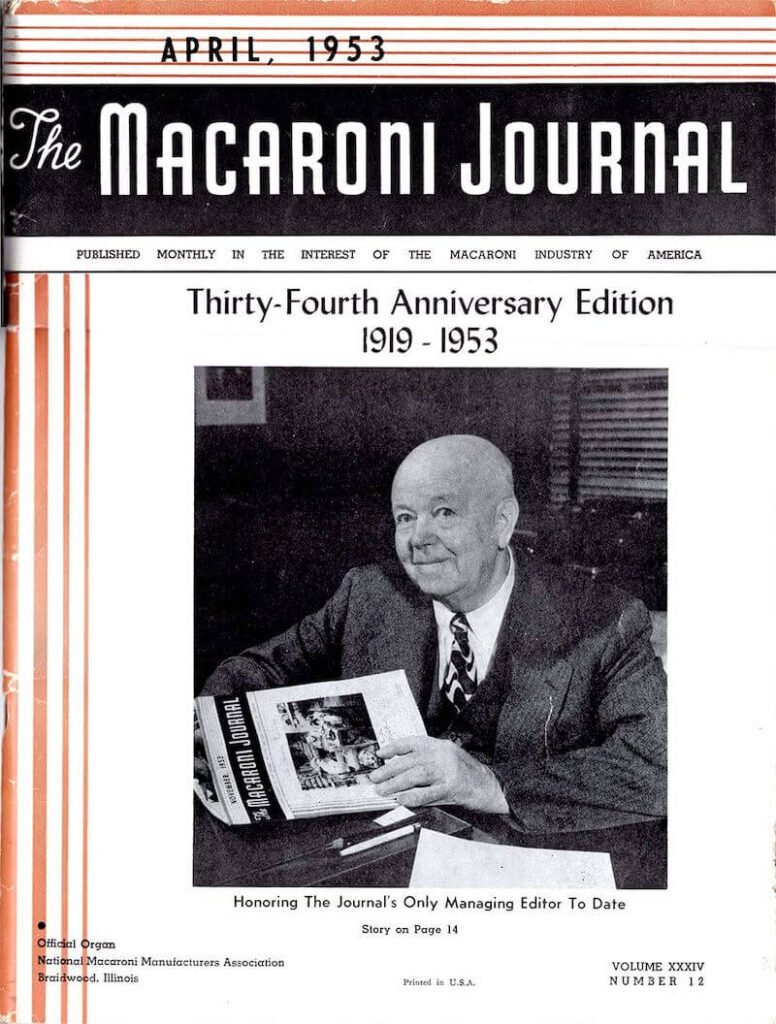

Well, at the time Italy and the Mediterranean still had a bit of a bad press. Pasta was sometimes viewed as a poor and greasy food, and Italian immigrants were often seen as criminals (would that the Americans had the tolerance of King Roger II of Sicily). By presenting pasta as a universally adored dish, beloved by both the Chinese and Europeans, the food industries hoped to elevate its appeal both domestically and abroad, across the Atlantic.
The Historical Evolution of Pasta
So, where does pasta come from in its modern form?
From the thirteenth century onwards, references to pasta dishes — macaroni, ravioli, gnocchi, vermicelli — started cropping up more often across the Italian peninsula. The fourteenth-century writer Boccaccio, in his collection of earthy tales The Decameron, even fantasises about a mountain of Parmesan cheese down which pasta chefs roll macaroni and ravioli to eager gluttons below.
By the fourteenth and fifteenth centuries, dried pasta had become popular for its ease of storage, making it a reliable provision on ships exploring the New World. A century later, pasta had spread around the globe during the age of discovery.
And what about the famous pairing of pasta with tomato sauce? Although tomatoes were introduced to Italy in the sixteenth century, it wasn’t until the late eighteenth century that the first written record of pasta with tomato sauce appeared in the 1790 cookbook L’Apicio Moderno (“The Modern Apicius”) by Roman chef Francesco Leonardi. (For those who are wondering, Apicius was the author of ancient Rome’s sole surviving cookbook, and believe me when I say that its recipes are foul).
Before tomato sauce, pasta was eaten dry with the fingers; the introduction of a liquid sauce necessitated the use of a fork, changing the way we enjoy pasta forever. So, next time you twirl your fork around a plate of spaghetti, remember the rich history that has brought pasta from ancient Sicily to dinner tables around the world.
Love Learning about Italian Food?
Then join one of our cooking classes in Rome! Rome with Chef specialises in pasta and tiramisù cooking classes, in which you’ll learn to make two of Italy’s most beloved culinary classics, and our spritz & spaghetti cooking classes, which teach you how to make authentic carbonara pasta and three typical Italian cocktails.

